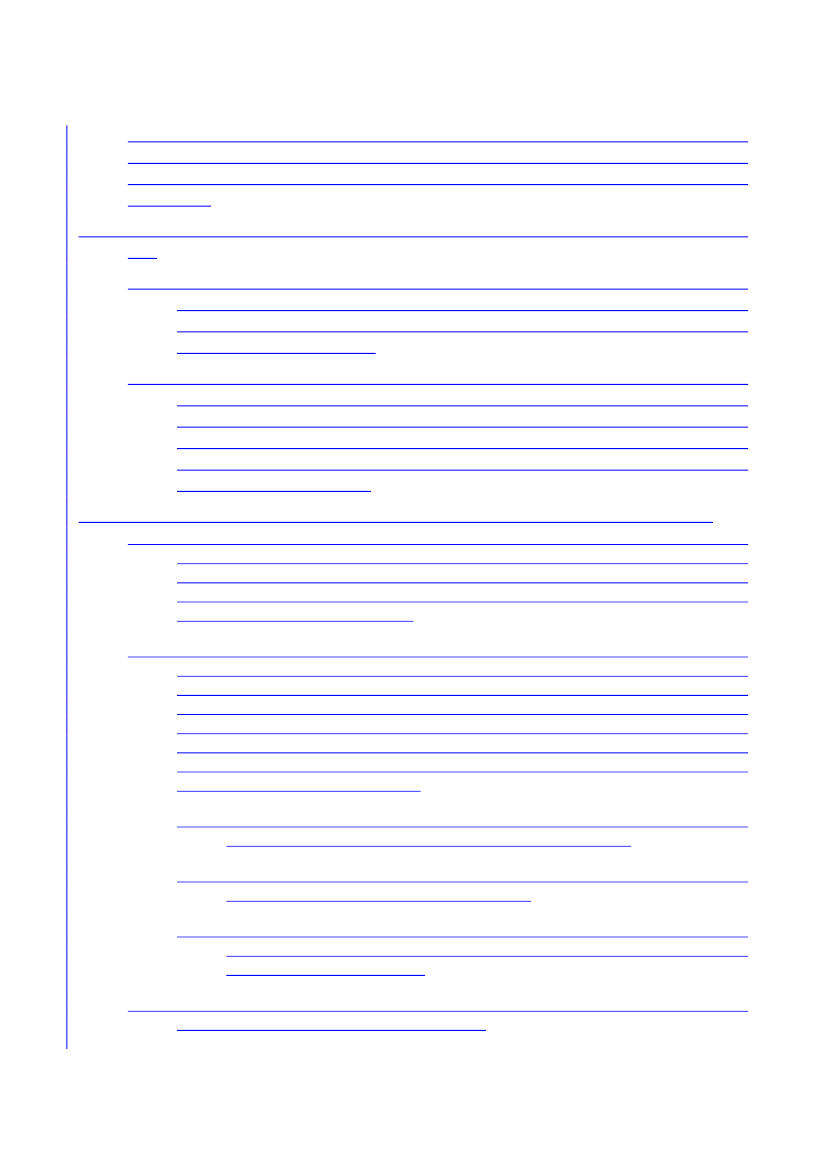Udvalget for Fødevarer, Landbrug og Fiskeri 2013-14
FLF Alm.del
Offentligt
State aid Registry - Directorate-General for CompetitionEuropean Commission 1049 Bruxelles, BELGIQUERef.: "HT 359 - Consultation on Community Guidelines on State Aid for Environmental Protection"Proposed additional wording to the Commission draft on Environmental and energyguidelines for state aid 2014-20205.7 Aid in the form of reductions in funding support for electricity from renewable sources1
(1)
The funding of support to energy from renewable sources though charges does as such not target anegative externality and accordingly has no direct environmental effect. However, it may result inhigher electricity prices. The increase in electricity prices may be explicit through a specific chargewhich is levied from electricity consumers on top of the electricity price or indirectly throughadditional costs faced by electricity suppliers due to obligations to buy renewable energy which aresubsequently passed on to their customers, the electricity consumers. A typical example would bethe mandatory purchase by electricity suppliers of a certain percentage of renewable energythrough green certificates for which the supplier is not compensated.In principle, all energy consumers should bear the costs of financing renewable energy support.However, some reductions may be needed to secure a sufficient financing base for renewableenergy support2. In order to avoid that undertakings particularly affected by the funding ofrenewable energy support are put in a difficult competitive situation, Member States may wish togrant partial compensation for additional costs so as to facilitate the overall funding of support toenergy from renewable sources and avoid carbon leakage. With no compensation to particularlyaffected undertakings, public acceptance of setting up ambitious renewable energy supportmeasures may be limited. On the other hand, if such compensation is too high or awarded to toomany electricity consumers, public acceptance for renewable energy support may be equallyhampered.For the assessment of State aid to compensate for the financing of support to energy fromrenewable sources, the Commission will only apply the conditions set out in this section and insection 5.1.7.In order to ensure that the aid serves to facilitate the funding of support to energy from renewablesources, Member States will need to demonstrate that the additional costs reflected in higherelectricity prices faced by the beneficiaries only result from the support to energy from renewablesources. The additional costs cannot exceed the funding of support to energy from renewablesources3.
(2)
(3)
(4)
1
2
3
Internal market legislation (Directive 2009/72/EC of 13 July 2009 concerning common rules for internal market inelectricity and repealing Directive 2003/54/EC1, Regulation (EC) No 714/2009 of 13 July 2009 on conditions foraccess to the network for cross-border exchanges in electricity and repealing Regulation (EC) No 1228/20031andthe subsequent network codes and guidelines), does not give right to cross-subsidisation of consumers witihn thetarriff regimes.In order to have a generally high contribution from electricity consumers to the financing of support to energy fromrenewable sources, some electricity consumers may need to be given a more favourable treatment in particular toprevent carbon leakage.The most direct way to demonstrate the causal link if by reference to a charge or levy on top of the electricity pricewhich is dedicated to the funding of energy from renewable sources. An indirect way to demonstrate the additionalcosts would be to calculate the impact of higher net costs for the electricity suppliers from green certificates andcalculate the impact on the electricity price assuming the higher net costs are passed on by the supplier.
State aid Registry - Directorate-General for CompetitionEuropean Commission 1049 Bruxelles, BELGIQUERef.: "HT 359 - Consultation on Community Guidelines on State Aid for Environmental Protection"(5)For companies at risk of carbon leakage, the Commission can apply a simplified approach to assessthe necessity and proportionality of the aid. For all other sectors, a more in depth assessment ofthe necessity, proportionality and conditions of the aid is needed.Situation 1: Aid to electricity consumers at risk of carbon leakage in the form of reductions infunding support for electricity from renewable sources
(6)
In order to ensure that the aid has an environmental effect the aid should be targeted to avoid thatwithout a reduction in the cost burden, certain sectors are at risk of relocating outside the EU. Theaid should be limited to sectors that are exposed to a significant risk of carbon leakage due to thefunding of support to energy from renewable sources. Accordingly, the aid can only be granted ifthe sector intensity of trade with third countries is above [10]% and the costs of funding renewableenergy support lead to a substantial increase in production costs calculated as a proportion of thegross value added amounting to at least [5]%4.[Views are in particular welcome concerning this provision in the public consultation]
(7)
Within the eligible sector Member States need to ensure that the choice of beneficiaries is made onthe basis of objective and transparent criteria and that the aid is granted in principle in the sameway for all competitors in the same sector or relevant market5if they are in a similar factualsituation.The Commission will consider the aid to be proportionate if the following cumulative conditions aremet:
(8)
(a)
The compensation is paid as a lump sum amount. The aid may be paid to the beneficiary inthe year in which the costs are incurred or in the following year. If the aid is paid in the yearin which the costs are incurred an ex post monitoring mechanism needs to be in place toensure that any over-payment of aid will be repaid before 1 July of the following year;The aid beneficiaries pay at least [15]% of the additional costs without reduction until[31.12.2017] and [20%] as of [1.1.2018].
(b)
Situation 2: Aid to electricity-intensive consumers in the form of reductions in fundingsupport for electricity from renewable sources in order to increase the environmentalprotection and energy savings(9)The Commission considers that State Aid is an appropriate instrument if member states have inplace national policies to achieve emissions reductions, energy savings or production of energyfrom renewable energy sources going beyond Union targets and intend to grand State Aid toachieve those higher targets.In order to ensure that the aid has an environmental effect the aid should be targeted to avoid that– without a reduction in the financing burden – the higher Member State targets puts firms whichare particular affected by the funding support for electricity from renewable sources in a difficult
(10)
4
Similar criteria were used to establish annex II of the ETS State Aid Guidelines (Commission Communication 2012/C158/04 of 5.6.2012).5As defined in the Commission notice on the definition of the relevant market for the purposes of Communitycompetition law (OJ C 372, 9.12.1997, p. 5).
State aid Registry - Directorate-General for CompetitionEuropean Commission 1049 Bruxelles, BELGIQUERef.: "HT 359 - Consultation on Community Guidelines on State Aid for Environmental Protection"competitive situation with a risk of of terminating production. Accordingly, the aid can only begranted if the beneficiary or association of beneficiaries are defined as (1) electricity intensive and(2) concludes an agreement between the Member State and the beneficiaries or associations ofbeneficiaries.
(11)
The Commission will consider the aid to be necessary if the following cumulative conditions aremet:
(a)
Within the eligible sector, Member States need to ensure that the choice of beneficiaries ismade on the basis of objective and transparent criteria and that the aid is granted inprinciple in the same way for all competitors in the same sector or relevant market if theyare in a similar factual situation.The enterprise shall be electricity intensive. An “electricity-intensive enterprise shall mean abusiness entity where more than [1.500] MWh is utilised per [1 million] euro value addedor where the electricity is utilised for electricity-intensive processes such as mineralogicaland metallurgical processes, electrolysis and chemical reduction and where “value added”shall mean the total turnover liable to VAT including export sales minus the total purchasesliable to VAT including imports.
(b)
(12)
The Commission will consider the aid to be proportionate , if the following conditions are met:
(a)
The compensation is paid as a lump sum amount. The aid may be paid to thebeneficiary in the year in which the costs are incurred or in the following year. If theaid is paid in the year in which the costs are incurred an ex post monitoringmechanism needs to be in place to ensure that any over-payment of aid will be repaidbefore 1 July of the following year;The tax reduction is conditional on the conclusion of agreements between theMember State and the beneficiaries or associations of beneficiaries whereby thebeneficiaries or associations of beneficiaries commit themselves to achieveenvironmental protection objectives which have the same effect as if beneficiariespay at least 20% of the national tax or if the EU minimum tax level were applied.Such agreements or commitments may relate, among other things, to a reduction inenergy consumption, a reduction in emissions or any other environmental measureand satisfy the following conditions:iiiiiithe substance of the agreements is negotiated by the Member State, specifiesthe targets and fixes a time schedule for reaching the targets;the Member State ensures independent and timely monitoring of thecommitments concluded in those agreements;those agreements are revised periodically in the light of technological andother developments and stipulate effective penalty arrangements applicable ifthe commitments are not met.
(b)
(c)
The aid beneficiaries pay at least [15]% of the additional costs without reductionuntil [31.12.2017] and [20%] as of [1.1.2018].
State aid Registry - Directorate-General for CompetitionEuropean Commission 1049 Bruxelles, BELGIQUERef.: "HT 359 - Consultation on Community Guidelines on State Aid for Environmental Protection"




